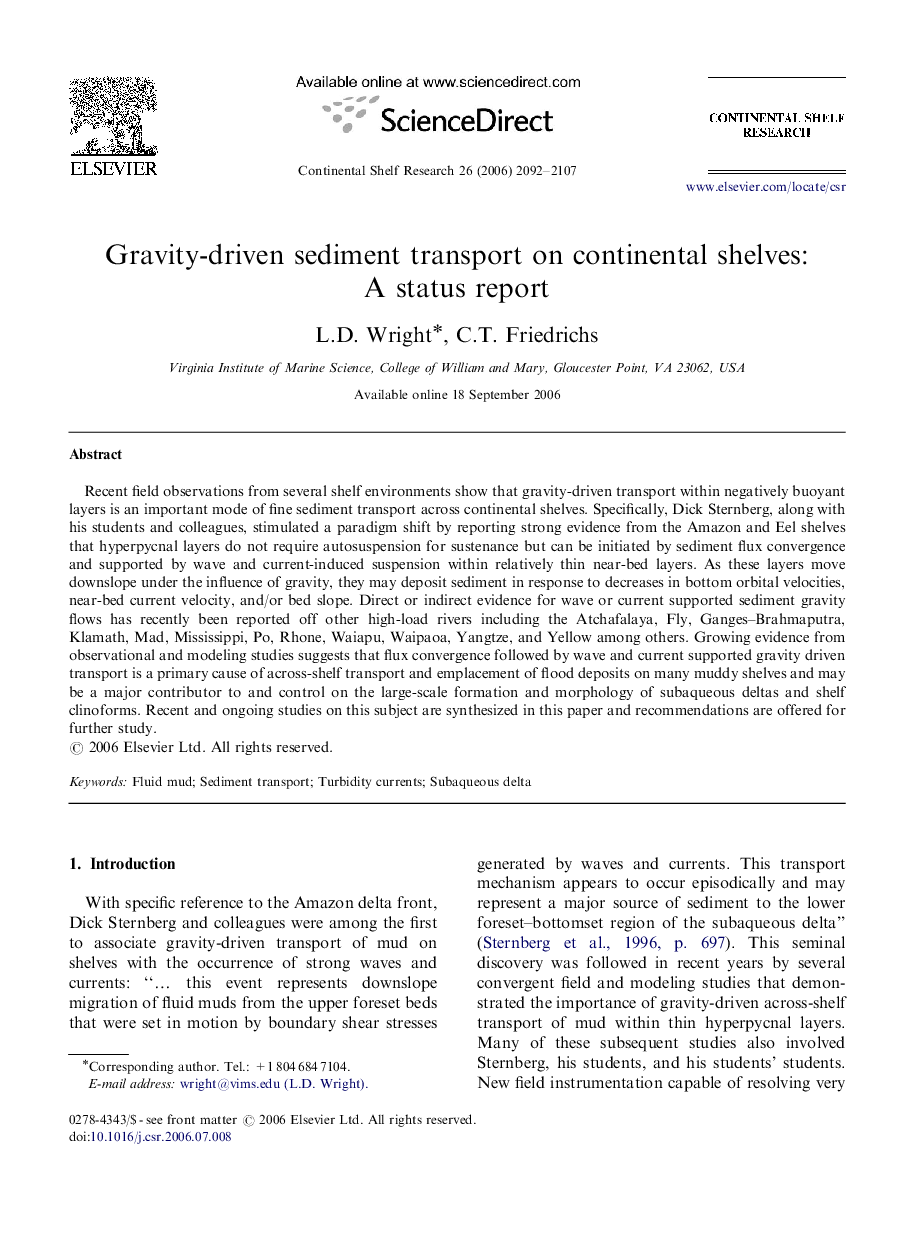| Article ID | Journal | Published Year | Pages | File Type |
|---|---|---|---|---|
| 4533917 | Continental Shelf Research | 2006 | 16 Pages |
Recent field observations from several shelf environments show that gravity-driven transport within negatively buoyant layers is an important mode of fine sediment transport across continental shelves. Specifically, Dick Sternberg, along with his students and colleagues, stimulated a paradigm shift by reporting strong evidence from the Amazon and Eel shelves that hyperpycnal layers do not require autosuspension for sustenance but can be initiated by sediment flux convergence and supported by wave and current-induced suspension within relatively thin near-bed layers. As these layers move downslope under the influence of gravity, they may deposit sediment in response to decreases in bottom orbital velocities, near-bed current velocity, and/or bed slope. Direct or indirect evidence for wave or current supported sediment gravity flows has recently been reported off other high-load rivers including the Atchafalaya, Fly, Ganges–Brahmaputra, Klamath, Mad, Mississippi, Po, Rhone, Waiapu, Waipaoa, Yangtze, and Yellow among others. Growing evidence from observational and modeling studies suggests that flux convergence followed by wave and current supported gravity driven transport is a primary cause of across-shelf transport and emplacement of flood deposits on many muddy shelves and may be a major contributor to and control on the large-scale formation and morphology of subaqueous deltas and shelf clinoforms. Recent and ongoing studies on this subject are synthesized in this paper and recommendations are offered for further study.
